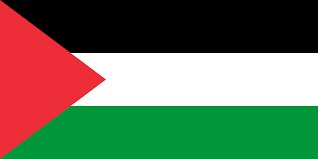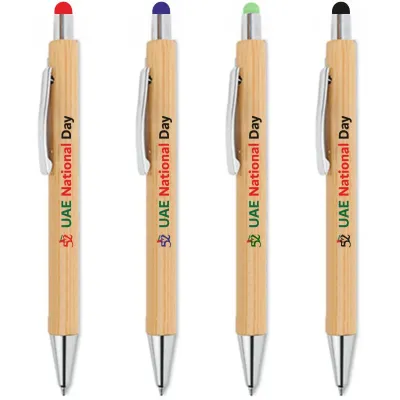Meaning of Colors in Flag of Palestine
Meaning of Colors in Flag of Palestine

Flags are more than just pieces of colored fabric fluttering in the wind; they are symbolic representations of identity, history, and aspirations. In the case of Palestine, flags carry immense significance, encapsulating the struggle, resilience, and hopes of its people. In this exploration, we embark on a journey to delve deep into the importance, design, and history of Palestine's flags.
Understanding the Importance of Flag
Flags serve as powerful symbols, representing the collective identity and values of a nation or community. For Palestinians, their flag embodies their national identity and their struggle for self-determination and independence. It serves as a rallying point, uniting Palestinians across geographical boundaries and political divides under a common emblem.
Design Elements of the Palestinian Flag
The Palestinian flag is a tricolor banner consisting of three horizontal stripes: black, white, and green, with a red triangle protruding from the hoist side. Each element of the flag carries symbolic meaning deeply rooted in Palestinian history and aspirations.
Black Stripe
The black stripe symbolizes the hardships and suffering endured by the Palestinian people, reflecting the mourning for those who have lost their lives in the struggle for freedom and justice. It serves as a poignant reminder of the sacrifices made by generations of Palestinians in their quest for self-determination.
White Stripe
The white stripe represents peace and hope, signifying the Palestinians' unwavering belief in a future of tranquility and reconciliation. Despite the adversities they face, Palestinians cling to the hope for a peaceful resolution to the longstanding conflict with Israel.
Green Stripe
The green stripe is emblematic of the land of Palestine itself, evoking images of its fertile fields, lush landscapes, and rich cultural heritage. It serves as a testament to the Palestinians' deep connection to their homeland and their determination to preserve it for future generations.
The red triangle, which extends from the hoist side of the flag, represents the blood shed by Palestinians in their struggle for liberation and justice. It serves as a stark reminder of the human cost of the ongoing conflict and the resilience of the Palestinian people in the face of adversity.
Historical Evolution of the Palestinian Flag
The history of the Palestinian flag is intertwined with the tumultuous events that have shaped the Palestinian national identity and struggle for statehood. The earliest known Palestinian flag dates back to the early 20th century, during the period of the British Mandate in Palestine.
In 1917, the Arab Revolt against Ottoman rule saw the emergence of the first Palestinian flag, which featured three horizontal stripes of red, white, and green, similar to the flags of other Arab nations. However, this flag was not widely adopted, and its usage declined in the subsequent years.
The modern Palestinian flag that we recognize today traces its origins to the Palestinian National Movement of the mid-20th century. In 1964, the Palestine Liberation Organization (PLO) adopted a new flag at its inaugural session in Jerusalem. Designed by Palestinian artist Sharif Hussein, this flag featured the iconic tricolor design with the addition of a black triangle at the hoist side.
The PLO flag gained international recognition as the symbol of the Palestinian national movement and was flown alongside the flags of other member states at various international forums and events. However, it was not until the declaration of independence by the Palestinian National Council in 1988 that the flag was officially adopted as the national flag of Palestine.
Since then, the Palestinian flag has become a ubiquitous symbol of Palestinian identity and resistance, representing the aspirations of millions of Palestinians for statehood, sovereignty, and dignity.
Controversies and Challenges
Despite its widespread acceptance among Palestinians and recognition by numerous countries and international organizations, the Palestinian flag remains a source of controversy and contention in the context of the Israeli-Palestinian conflict.
Israel, which views the Palestinian flag as a symbol of Palestinian nationalism and opposition to its existence as a Jewish state, has sought to suppress its display in various contexts. Israeli authorities have frequently confiscated Palestinian flags during protests and demonstrations in the occupied territories, citing security concerns and regulations prohibiting the display of "unauthorized" flags.
Moreover, the use of the Palestinian flag has been politicized by various actors on the international stage, with some countries and organizations endorsing its display as a symbol of solidarity with the Palestinian cause, while others condemn it as a provocative gesture against Israel.
In recent years, efforts to raise the Palestinian flag at the United Nations and other international forums have sparked heated debates and diplomatic wrangling, reflecting the deep-seated divisions and competing narratives that characterize the Israeli-Palestinian conflict.
The Symbolism of Resistance and Resilience
Despite the challenges and controversies surrounding its use, the Palestinian flag remains a potent symbol of resistance and resilience for Palestinians worldwide. It serves as a constant reminder of their enduring struggle for justice, dignity, and freedom in the face of occupation, displacement, and oppression.
The image of the Palestinian flag fluttering defiantly against the backdrop of Israeli military checkpoints, towering walls, and sprawling settlements has become an enduring symbol of Palestinian resistance and resilience in the face of adversity. It embodies the Palestinians' refusal to surrender their rights and aspirations despite the immense challenges they face.
Moreover, the Palestinian flag has transcended its symbolic significance to become a tangible expression of Palestinian identity and solidarity, uniting Palestinians of all backgrounds and affiliations in their common quest for self-determination and justice.
Conclusion
In conclusion, the flags of Palestine are more than mere symbols; they are powerful expressions of Palestinian identity, history, and aspirations. From the earliest iterations of the flag to the modern emblem that flies proudly over Palestinian towns and cities, the Palestinian flag embodies the resilience, sacrifice, and hope of a people determined to reclaim their homeland and their dignity.
Despite the challenges and obstacles they face, Palestinians continue to draw strength and inspiration from their flag, reaffirming their commitment to the struggle for freedom, justice, and equality. As long as the Palestinian flag continues to wave, so too will the spirit of resistance and resilience that defines the Palestinian people.
Trending Categories for Promotional Products
Browse the most popular and trending products and be the part of the trendy products





















